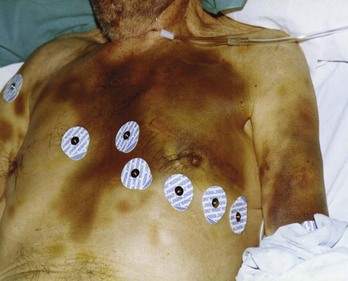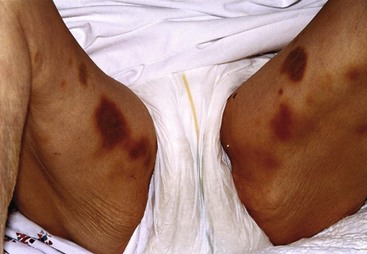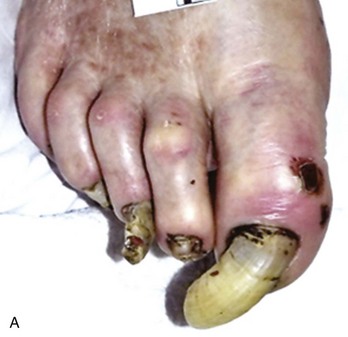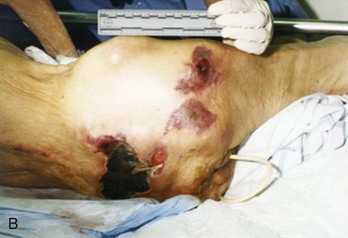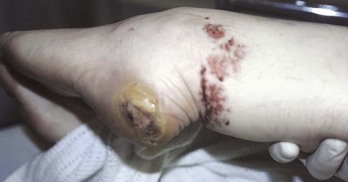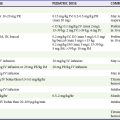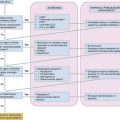Elder Abuse and Neglect
Perspective
Currently, 13% of the population in the United States is estimated to be 65 years of age or older.1 The elderly segment of the population is expected to increase to 16% of the population by 2020 and 20% of the population by 2050.2 Furthermore, the “oldest” old (85 years and older) will make up an increasing proportion of the population. At this time, older patients make about 15% of emergency department visits. This number is expected to increase to 25% by the year 2030, with 5% being older than 85 years.3 As the aging population continues to increase, it is anticipated that the number of cases of elder abuse will also rise. Because older adults will make up a larger portion of emergency department visits in the future, emergency physicians need to have a greater knowledge of the risk factors and signs of abuse and neglect and consider them more frequently in the differential diagnosis.4
With aging, there is an increase in vulnerabilities, such as physical and cognitive decline, expended financial resources, and uncertain medical insurance. As the U.S. population ages, there is a greater need to recognize and respond to signs of elder abuse and neglect. The World Health Organization has recognized that abuse and neglect of elders are global health problems.5 Elderly individuals may be isolated from society as a result of physical illness, disability, mental illness (e.g., dementia), and age. Visits to physicians by elderly persons may provide their only contact outside the family. Elderly persons frequently visit the emergency department for medical care. Therefore emergency physicians have the opportunity to diagnose suspected elder abuse and initiate further evaluation by elder abuse teams and Adult Protective Services.6 However, one survey suggests that emergency physicians may lack awareness and adequate training about elder abuse. In this survey of 705 emergency physicians, 79% reported they had treated a case of elder abuse in the previous year, but only 50% said they had reported the abuse. Of respondents, 28% believed elder abuse is rare, and 84% rarely ask their patients directly about elder abuse. Only 31% of emergency physicians responded that they are aware of a written protocol for elder abuse in the emergency departments where they practice, and just 38% said they are familiar with their state laws pertaining to elder abuse. In addition, only 40% responded that they are aware of types of community services available for victims of elder abuse, and only 25% could recall receiving education about elder abuse during their residencies.7 It is hoped that through education and increased awareness, these numbers will increase markedly, as the emergency department often serves as the first step in the detection of an abusive or neglectful situation.
Epidemiology
It has been estimated that 2 million elders are neglected or abused annually in the United States.8 The National Elder Abuse Incidence Study found that 449,924 Americans older than age 60 years had experienced some form of mistreatment in the previous year.9 In this study the median age of victims of elder abuse was 78 years, and two thirds of victims were women. Of identified elder abuse victims, 66% were white, 19% black, and 10% Hispanic. More than two thirds of perpetrators of elder abuse were family members, primarily spouses and grown children, and the overwhelming majority of victims lived with the perpetrators. A total of 77% of victims were unable or only somewhat able to care for themselves; 60% of victims were either very confused or occasionally confused. In addition, 37% of elder abuse victims were moderately depressed, and 6% were severely depressed. The more recent National Elder Maltreatment Study interviewed 5777 adults older than age 60 years (average age 71.5 years) and found a 1-year prevalence of 4.6% for emotional abuse, 1.6% for physical abuse, 0.6% for sexual abuse, 5.1% for potential neglect, and 5.2% for financial abuse.10 This study also found that very little of the abuse was reported to authorities.
A systematic review of studies measuring the prevalence of elder abuse published in 2008 found that 6% of older people living in the community reported significant abuse within the previous month.11 When looking more specifically at vulnerable older people, the review found that one fourth of those who were dependent on others for care reported significant psychological abuse, and one fifth reported neglect. One third of family caregivers reported perpetrating abuse, and of professional caregivers in long-term care, 16% admitted to perpetrating psychological abuse, and 10% admitted to perpetrating physical abuse. In this review, very few cases were reported to Adult Protective Services. Studies have shown that as few as 1 in 14 cases of elder abuse is actually reported.12
Definitions and Types of Elder Abuse
Some of the difficulty in establishing the true incidence and prevalence of elder abuse stems from the lack of uniformity of definitions of elder abuse, both among researchers and in legislation. Definitions vary from state to state and often lack objective criteria for reliably establishing a medical diagnosis. Elder abuse is a form of family violence, along with child abuse and intimate partner violence. There are three main categories of elder abuse: domestic elder abuse, institutional elder abuse, and self-neglect or self-abuse. Domestic elder abuse includes any form of elder abuse inflicted in the elder’s home or the caregiver’s home by a family member or a caregiver. Institutional abuse includes any form of elder abuse that occurs in a residential facility for elderly persons, usually inflicted by individuals who are hired to provide care. Self-neglect or self-abuse is the result of the behavior of an elderly person and threatens the well-being of that individual. Self-neglect usually involves the refusal or failure of elderly individuals to provide themselves with basic necessities, such as food, water, shelter, medications if indicated, and appropriate personal hygiene. In 45% of cases of self-neglect, elders 80 years of age or older are involved.13 Self-neglect does not include mentally competent elderly individuals who understand the consequences of their decisions.
In addition to the three main categories, elder abuse can be grouped into six types: physical abuse, sexual abuse, emotional or psychological abuse, neglect, abandonment, and financial or material exploitation.13 In a study of substantiated cases of elder abuse, 58% involved neglect, 11% physical abuse, 15% exploitation, 15% emotional abuse, and 1% sexual abuse.14 Victims of elder abuse are often subjected to multiple types of elder abuse.
Abandonment is defined as the desertion of an elderly person by the caregiver, custodian, or an individual who is responsible for providing care. As many emergency physicians are aware, elderly patients may be abandoned in the emergency department. One survey reported that a median of 24 elderly patients were abandoned annually per emergency department, with 46% living alone and no longer being able to look after themselves and 41% being left in the emergency department by family members or a caregiver.15 Abandonment may be considered a form of neglect.
Financial or material exploitation is defined as the illegal or improper use of an elderly person’s money, property, or assets. Financial exploitation includes denying an elderly person his or her home; stealing money or belongings; and coercing an elderly individual into signing contracts, changing a will, or assigning durable power of attorney to someone against his or her wishes. It may also include coercing an elderly individual to take out a loan or sign a legally binding document when he or she does not possess the mental capacity to do so.16
Etiology of and Risk Factors for Elder Abuse
There are several theories regarding the cause of elder abuse.17 More recent focus has been directed toward the abusing relative or caregiver. The social learning or transgenerational violence theory proposes that children who grow up in an abusive household may go on to be abusive to their own children and perhaps parents. Another theory, the stressed caregiver theory, proposes that as a caregiver becomes increasingly stressed (from caregiving or other causes), elder abuse is more likely to occur. Some researchers theorize that it is the psychopathology of the abuser that leads to elder abuse. Proponents of the isolation theory contend that as elderly individuals become more socially isolated as a result of illness, disability, and age, they are at increased risk for abuse. Those who adhere to the dependency theory believe that increasing frailty is the underlying cause of elder abuse, whereas others contend that frailty only prevents many elders from protecting or defending themselves and that the true cause lies with the abuser. It is now recognized that no single theory can account for all situations of abuse or neglect. An integrated theoretic model may best describe all potential factors involved, and each circumstance may involve some components to a greater degree than others.
Numerous risk factors for elder abuse have been proposed. These factors may be divided into four main categories: caregiver risk factors for abusing, elder risk factors for being abused, environmental risk factors, and institutional abuse risk factors (Box 69-1).18,19 The National Elder Maltreatment Study evaluated correlates for each type of abuse and found that the most consistent correlates across abuse types were low social support and previous traumatic event exposure. Emergency providers should be aware of these risk factors and alert to the possibility of abuse among all elderly patients.
Clinical Features
Elderly patients are four times more likely to be brought to the emergency department by ambulance than nonelderly patients.20 When elders are brought to the emergency department by ambulance, the emergency medical technicians or paramedics may be invaluable in identifying at-risk elders on the basis of their assessment of the home situation and the family dynamics at the home. The emergency provider should question prehospital care personnel about the cleanliness and upkeep of the home; the availability of electricity, heat, water, and sanitation; infestation by rodents or vermin; and the safety of the interior of the home for the older patient.
The American Medical Association (AMA) has recommended that all health care providers routinely ask their older patients about abuse, even in the absence of signs of abuse.21 Patients should be questioned in as private a setting as possible, after the family or caregiver has left the room. If the patient has dementia or is unable to answer questions for other reasons, individuals who have knowledge about the patient, other than the caregiver, should be questioned, such as other family members, visiting home nurses and assistants, therapists, primary care physician, or neighbors. If a translator is needed, someone other than a family member or the caregiver should be used. To broach the subject of elder abuse, the interviewer begins by asking about the patient’s care in general and then focuses on abuse and specific types of abuse (Box 69-2). Factors that have been shown to have a significant association with suspected elder abuse include a brittle support system, feelings of loneliness, expression of conflict with family or friends, alcohol abuse, short-term memory problems, and psychiatric illness.22 One study determined that emergency department nurses can be trained to routinely ask older patients about neglect and appropriately refer them for care.23 There are now several instruments available to assist medical personnel in inquiring about and identifying abuse and neglect. These tools involve direct questioning of the elder, recognition of possible physical signs, or identification of risk factors. No single test has been found to be optimal, but the use of multiple approaches may be most helpful in recognizing abuse victims. If elder abuse is identified, the provider should question the patient further about the duration and frequency of the abuse, the nature of the abuse, and whether there has been intervention or assistance in the past because of the abuse.
There is increasing evidence that elder abuse is associated with adverse health outcomes, including increased dementia, depression,24 and premature death,25 thus making a thorough, well-documented medical history and physical examination critical. It is best to elicit the history from the patient and caregiver separately. Potential historical indicators of abuse are listed in Box 69-3. As part of the medical history, the patient and caregiver should be asked about routine medications; the discovery of caregivers who are unfamiliar with daily medications and other necessary medical care of the elderly patient (e.g., dressing changes) raises the suspicion of elder neglect. If injuries are noted, the emergency provider should question the patient about how the injuries occurred, including directed questions regarding whether anyone has hit, punched, or kicked the patient. If the injuries occurred as a result of interpersonal violence, the relationship between the patient and abuser should be ascertained. Before questioning patients, providers should inform them that providers are mandated to report abuse when it is disclosed. However, even in the absence of disclosure, most states mandate reporting elder abuse if it is reasonably suspected. Because elders may be afraid to disclose abuse, it is important that providers reassure their patients that the goal is to provide a safer living environment and not primarily to punish the caregiver. When a patient expresses fear about mandatory reporting, the provider should note this information in the report to Adult Protective Services so that the risk to the patient can be minimized.
When performing a physical examination of an elderly patient, the emergency provider should look for signs of physical abuse, sexual abuse, and neglect (Box 69-4). Clinical skill and judgment are required because illnesses resembling abuse occur frequently in older patients (e.g., easy bruising, fractures resulting from osteoporosis or osteopenia, dehydration). Elder abuse is included in the differential diagnosis of numerous conditions that occur frequently in the geriatric population. Elderly patients with multiple clinical findings consistent with elder abuse have a higher likelihood of being victims than do patients with isolated findings. In addition, injuries and medical conditions for which no underlying cause can be determined are more likely to be a result of abuse.
During the physical examination, the clinician should make note of the general appearance (e.g., cleanliness, hygiene, and dress) and behavior (e.g., agitated, fearful, withdrawn) of the patient. The skin should be examined for unexplained bruises, particularly of the head, face, torso, back, bilateral upper arms, inner aspect of the arms, or inner aspect of the thighs (Figs. 69-1 and 69-2). In addition, bruising on the neck, ears, genitalia, buttocks, or soles of the feet is suspicious in an elder.26 In one study of bruises in 67 elderly individuals who had been reported to Adult Protective Services because of suspected physical elder abuse, bruises that an expert panel determined were a result of elder physical abuse were often large (>5 cm) and found on the face, lateral right arm, or posterior torso.27 Another study followed unintentionally acquired bruises in elders for up to 6 weeks; it was found that the color of bruises was not a reliable indicator of the age of the bruises.26 Attention should also be paid to the state of care of decubitus ulcers, if present (Fig. 69-3). Head and facial injuries, including broken teeth, lacerations, or the absence of hair, may reflect abuse. If the genitourinary examination reveals evidence of trauma or vaginal bleeding and if sexual abuse is suspected, a complete sexual assault examination, including collection of evidence by a forensic examiner, is indicated as in other cases of sexual assault. The extremities should be examined for evidence of contractures that may indicate confinement for long periods, wrist and ankle lesions from restraints (Fig. 69-4), and the general condition of the toenails and feet (see Fig. 69-3).
Documentation
Accurate and thorough documentation of the history and physical examination findings in cases of suspected elder abuse is essential. The emergency provider should document the history of any suspected types of abuse, as well as the mechanism of injury, in the patient’s own words, if possible. This documentation should include details of the pertinent social history (e.g., caregiver’s identity, living arrangements, functional status). In addition, the documentation should include a description of injuries of any type (e.g., fractures, lacerations, and contusions) and their number, size, location, color, and stage of healing. When possible, the provider should obtain photographs of the injuries before rendering treatment. In addition to photographs, the provider should document the locations and types of injuries on a body map or diagram. In California, a statewide form has been developed for the purpose of documenting a forensic examination in cases of elder abuse, although as of 2013 its use was not mandated.28 The health care provider should document whether the mechanism of each injury, as provided by the patient, seems appropriate and compatible with the history. The results of laboratory investigations and imaging studies should also be recorded. Careful documentation of follow-up plans, referrals, and interventions should be made. If a report is made to Adult Protective Services, the provider should record the name of the individual contacted and the case number. In addition, if law enforcement is contacted, the provider should document the name and badge number of the officer taking the report. In cases of suspected elder abuse that result in legal action, thorough documentation may be critical in determining the outcome and the ultimate care of the patient.
Interventions and Referrals
If there is immediate danger, the patient should be prevented from having any contact with the suspected abuser, which may involve being removed from the home. Hospitalization may be required because of injuries and ongoing medical problems. However, in the absence of an acute medical illness, medical insurance companies and third-party payers may not cover the cost of hospitalization, and a safe-house placement may be required.29 Proper use of the diagnosis and diagnostic codes can ensure that appropriate care: Adult Maltreatment (unspecified) (ICD-9: 995.8; ICD-10: suspected T76.91, confirmed T74.91).30,31
In suspected cases of elder abuse that pose a less imminent threat, interventions are individualized. If the patient wants to return home and may be safely discharged from the emergency department, a follow-up plan must be established and documented. This is best accomplished by a multidisciplinary team consisting of the patient’s primary care physician, nurses, social workers, and occupational therapists, or a geriatrics assessment team.32 Another approach includes Adult Protective Services caseworkers as members of the geriatric team.33 The follow-up assessment consists of an evaluation of the patient’s functional, cognitive, and medical status. Social and financial resources and the frequency, severity, and intent of the abuse should also be assessed. At least one home visit is recommended as part of the assessment.
The needs of the caregiver are an important component of the care plan. Support services, such as in-home services, respite care, psychological counseling, employment referrals, and alcohol and drug abuse rehabilitation program referrals, should be provided as needed. For the short term, the emergency health care provider may assist the caregiver by arranging increased involvement from other family members or friends, close follow-up with the patient’s primary care physician, a social services consultation, home nursing assistance, and the involvement of Adult Protective Services. Other referrals and resources that may be beneficial for both the elderly patient and the caregiver include senior centers, medical transportation services, Medicare referral, Meals On Wheels, senior housing, Social Security benefits, religious communities, home health, adult day care, hospice care, and victim assistance. Addressing behavioral issues in the elderly may also be very helpful to an overwhelmed caregiver. Ultimately, if the caregiver has severe personal problems that cannot be resolved, the only solution may be separation of the elder from the caregiver. If the elderly patient is competent and does not wish to accept interventions, he or she should nonetheless be educated about elder abuse and given referral materials. Some cases of elder abuse are actually intimate partner violence committed by the elder’s spouse.34 In these cases, consultation with intimate partner violence advocacy services is recommended.
Education of elderly victims about elder abuse and the likelihood that it will increase in frequency and severity over time is important. The AMA and the American College of Emergency Physicians endorse the need for all emergency departments to have protocols for the management of suspected cases of elder abuse to facilitate management and ensure appropriate care.21,35 The Joint Commission has standards for emergency departments that include having criteria for the detection and management of elder abuse among patients.36 Some emergency departments also have access to in-house elder abuse response teams that can be mobilized to assist the emergency physician with the management of these complex cases.
Reporting Requirements
In all 50 states and the District of Columbia, laws have now been enacted that pertain to the reporting and investigation of elder abuse. However, the definitions of elder abuse and requirements of the laws vary from state to state.37 In most states, physicians are mandated to file a report if they know or reasonably suspect that elder abuse has occurred, and in several additional states physicians are mandated to report only if the suspected victim resides in a nursing home.38 Many of the states with mandatory reporting requirements grant immunity to physicians who report suspected elder abuse. Most state laws also have a penalty for failure to report. These penalties usually consist of a fine, a jail sentence, or both. In most states, Adult Protective Services is designated as the agency responsible for receiving and investigating all reports of suspected elder abuse. The laws vary widely concerning the age at which “elder” is defined, with most states defining it as 60 years or older. In addition, the laws vary in their definitions of the circumstances of the abuse, the types of abuse, the reporting and investigation of the abuse, and specifics regarding domestic and institutional abuse. Additional criminal laws regarding assault and battery, theft, fraud, rape, and murder may also pertain to elder abuse. Laws concerning guardianship and conservatorship, durable powers of attorney, intimate partner violence, and family violence may also be related to elder abuse. Emergency providers should become familiar with state laws pertaining to elder abuse and their duty to report in the state in which they practice.
There are several issues regarding the mandatory reporting laws for elder abuse. Some physicians are concerned that reporting elder abuse constitutes a breach of confidentiality with their patients. Others are concerned that mandatory reporting may deter elders from seeking medical care. The AMA has stated that health care providers should inform their patients if they have a legal obligation to report elder abuse and the medical necessity to intervene in cases of elder abuse. The AMA also emphasizes that the goal is to end the abuse by facilitating access to resources for the patient and his or her family.21 There is a great need for standardization of legislation and increased funding to provide adequate service delivery to elder abuse victims and their families.
Elder abuse is often under-recognized and under-reported by emergency physicians. Reasons include a lack of awareness of the prevalence of elder abuse, ageism (discrimination against the elderly), lack of knowledge of the appropriate management of suspected elder abuse, lack of an emergency department protocol for suspected elder abuse, lack of time to conduct a time-consuming evaluation of the suspected abuse, the emergency physician’s concern about litigation, the emergency physician’s concern about having to take time away from his or her practice to testify in court, and the ethical issue of not wanting to breach physician-patient confidentiality. A systematic review of studies investigating health professionals’ knowledge, detection, and reporting of abuse, published in 2009, found that professionals consistently underestimated the prevalence of elder abuse; 33.7% of health care professionals had detected a case of elder abuse in the previous year, and only half of those cases were reported.39 Elderly patients may also contribute to the difficulty in identifying elder abuse, willingly or unwillingly, because of isolation resulting from illness or age; inability to report abuse; reluctance to disclose the elder abuse owing to embarrassment or guilt; fear of retaliation by the abuser; wanting to protect the abuser, who is often a spouse or a child; fear of the consequences of the discovery of the abuse; fear of institutionalization; cultural or ethnic beliefs and backgrounds; and feeling that they are a burden to their families.
Institutional Abuse
Approximately 5% of all elderly individuals reside in institutions such as nursing homes, board and care homes, and other assisted-living facilities. With the growing elderly population, this percentage is estimated to increase significantly in the future. In 1976, the Older Americans Act established the Long-Term Care Ombudsman Program to monitor nursing homes and board and care facilities, as well as to investigate cases of suspected elder abuse. This program is present in all 50 states. In 1987 the Nursing Home Reform Act included the right to be free from physical, sexual, and emotional abuse as well as isolation. Elderly residents of institutions may be subjected to abuse by other patients, visitors, and staff. A random survey of staff in long-term care institutions in one state revealed that 10% of nurses’ aides reported having committed at least one act of physical violence in the previous year, and 40% at least one act of psychological abuse.40 Risk factors for institutional abuse are shown in Box 69-1.41,42 A study examining ombudsman data from six states found that a higher percentage of complaints lodged on behalf of minority patients were verified, but a lower percentage were fully resolved.43 When patients from long-term care facilities seek medical care, emergency providers should be alert to signs of possible abuse. When abuse is identified, these cases should be reported to the state long-term care ombudsman for further investigation.
Abuse of Persons with Disabilities
In most states the laws protecting elders from abuse also protect persons with disabilities, often referred to as dependent adults, vulnerable adults, or disabled adults. Included are persons aged 18 years or older who have developmental, mental, or physical disabilities. Little is known about abuse and neglect of persons with disabilities; however, adults with disabilities are reported to be at higher risk for abuse than persons without disabilities. In particular, persons with developmental disabilities are at high risk for abuse. Based on the National Crime Victimization Survey of 2008, the best conservative estimate is that people with developmental disabilities are two to three times as likely to be victims of violent crime (or abuse) than people without disabilities; the most pronounced are robbery (3.2 times higher) and sexual assault (1.9 times higher).44 Emergency providers should have a heightened awareness of the greater likelihood of abuse when managing patients with disabilities and understand the mandatory reporting laws and resources available to disabled victims in their state.
Future Directions
Residency training should include education in identifying and managing elder abuse and the reporting requirements for elder abuse. Emergency providers should also educate their patients and the community about the problem of elder abuse and the resources available in the community to assist elders and their caregivers. They should advocate for increased availability and funding of in-home services for elders. Furthermore, they should engage in research on elder abuse to increase the understanding of risk factors for elder abuse, gain knowledge about cultural factors, develop validated questions for the detection of elder abuse, determine effective management protocols, evaluate effective preventive interventions, and examine forensic markers of elder abuse.45
References
1. , Resident Population by Sex and Age: 1980 to 2009, Statistical Abstract of the United States: 2011. Population Division, U.S. Census Bureau: Washington, DC, 2011. www.census.gov/compendia/statab/2011/tables/11s0007.pdf.
2. , Resident Population Projections by Sex and Age: 2010 to 2050, Statistical Abstract of the United States: 2011. Population Division, U.S. Census Bureau: Washington, DC, 2011. www.census.gov/compendia/statab/2011/tables/11s0008.pdf.
3. Rokos, E, Wilber, S. The effect of future demographic changes on emergency medicine. Ann Emerg Med. 2006;48:65.
4. Samaras, N, Chevalley, T, Samaras, D, Gold, G. Older patient in the emergency department: A review. Ann Emerg Med. 2010;56:261–269.
5. World Report on Violence and Health. Geneva: World Health Organization (WHO), 2002.
6. Lachs, M, et al. ED use by older victims of family violence. Ann Emerg Med. 1997;30:448–454.
7. Jones, J, Veenstra, T, Seamon, J, Krohmer, J. Elder mistreatment: National survey of emergency physicians. Ann Emerg Med. 1997;30:473–479.
8. Bonnie RJ, Wallace RB, eds. Panel to Review Risk and Prevalence of Elder Abuse and Neglect, National Research Council: Elder Mistreatment: Abuse, Neglect, and Exploitation in an Aging America. Washington, DC: The National Academies Press, 2003.
9. National Center on Elder Abuse. The National Elder Abuse Incidence Study: Final Report. Washington, DC: U.S. Department of Health and Human Services; 1998.
10. Acierno, R, et al. Prevalence and correlates of emotional, physical, sexual, and financial abuse and potential neglect in the United States: The National Elder Mistreatment Study. Am J Public Health. 2010;100:292–297.
11. Cooper, C, Selwood, A, Livingston, G. The prevalence of elder abuse and neglect: A systematic review. Age Aging. 2008;37:151–160.
12. Pillemer, K, Finkelhor, D. The prevalence of elder abuse: A random sample survey. Gerontologist. 1998;28:51.
13. Tatara, T. Types of Elder Abuse in Domestic Settings. Washington, DC: National Center on Elder Abuse (NCEA); 1999.
14. Teaster, P. A 2004 Survey of State Adult Protective Services: Abuse of Adults 60 Years of Age and Older. Washington, DC: National Center on Elder Abuse (NCEA); 2006.
15. American College of Emergency Physicians (ACEP): Elderly abandonment survey: The abandonment of the elderly in the emergency department. Frontlines Fall, 1992.
16. Price, T, King, P, Dillard, R, Bulot, J. Elder financial exploitation: Implications for future policy and research in elder mistreatment. West J Emerg Med. 2011;12:354–356.
17. Jones, J, Holstege, C, Holstege, H. Elder abuse and neglect: Understanding the causes and potential risk factors. Ann Emerg Med. 1997;15:579–583.
18. Friedman, L, Avila, S, Tanouye, K, Joseph, K. A case-control study of severe physical abuse of older adults. J Am Geriatr Soc. 2010;59:417–422.
19. Krienert, JL, Walsh, JA, Turner, M. Elderly in America: A descriptive study of elder abuse examining National Incident-Based Reporting System (NIBRS) data, 2000-2005. J Elder Abuse Negl. 2009;21:325–345.
20. Strange, G, Chen, E, Sanders, A. Use of emergency departments by elderly patients: Projections from a multicenter data base. Ann Emerg Med. 1992;21:819.
21. American Medical Association (AMA). Diagnostic and Treatment Guidelines on Elder Abuse and Neglect. Chicago, Ill: AMA; 1992.
22. Shugarman, L, Fries, B, Wolf, R, Morris, J. Identifying older people at risk of abuse during routine screening practices. J Am Geriatr Soc. 2003;51:24–31.
23. Fulmer, T, Paveza, G, Abraham, I, Fairchild, S. Elder neglect assessment in the emergency department. J Emerg Nurs. 2000;26:436–443.
24. Dyer, C, Pavlik, V, Murphy, K, Hyman, D. The high prevalence of depression and dementia in elder abuse or neglect. J Am Geriatr Soc. 2000;48:205–208.
25. Dong, X, et al. Elder self-neglect and abuse and mortality risk in a community-dwelling population. JAMA. 2009;302:517–526.
26. Mosqueda, L, Burnight, K, Liao, S. The life cycle of bruises in older adults. J Am Geriatr Soc. 2005;53:1339–1343.
27. Wiglesworth, A, et al. Bruising as a marker of physical elder abuse. J Am Geriatr Soc. 2009;57:1191–1196.
28. Forensic Medical Report: Elder and Dependent Adult Abuse and Neglect Examination. Sacramento, Calif: California Emergency Management Agency, 2004.
29. Lachs, M, Williams, C, O’Brien, S, Hurst, L, Horwitz, R. Older adults: An 11-year longitudinal study of adult protective service use. Arch Intern Med. 1996;156:449–453.
30. Rudman, W. Coding and Documentation of Domestic Violence. San Francisco: Futures Without Violence; 2000.
31. National Center for Health Statistics, Centers for Disease Control and Prevention (CDC). International Classification of Diseases, Tenth Revision. Atlanta: CDC; 2011.
32. Twomey, MS, et al. The successes and challenges of seven multidisciplinary teams. J Elder Abuse Negl. 2010;22:291–305.
33. Schneider, D, Mosqueda, L, Falk, E, Huba, G. Elder abuse forensic centers. J Elder Abuse Negl. 2010;22:255–274.
34. Desmarais, SL, Reeves, KA. Gray, black, and blue: The state of research and intervention for intimate partner abuse among elders. Behav Sci Law. 2007;25:377–391.
35. American College of Emergency Physicians (ACEP), Domestic Family Violence. Irving, TX:ACEP; 2007. http://www.acep.org/Clinical Practice-Management/Domestic-Family-Violence.
36. Futures Without Violence: Comply with the Joint Commission Standard PC.01.02.09 on Victims of Abuse. www.futureswithoutviolence.org/section/our_work/health/_health_material/_jcaho, 2011.
37. Jogerst, G, Daly, J, Brinig, M, Dawson, J, Schmuch, G, Ingram, J. Domestic elder abuse and the law. Am J Public Health. 2003;93:2131–2136.
38. American Bar Association Commission on Law and Aging. Analysis of State Adult Protective Laws. Chicago: American Bar Association; 2007.
39. Cooper, C, Selwood, A, Livingston, G. Knowledge, detection, and reporting of abuse by health and social care professionals: A systematic review. Am J Geriatr Psychiatry. 2009;17:826–838.
40. Pillemer, K, Moore, D. Abuse of patients in nursing homes: Findings from a survey of staff. Gerontologist. 1989;29:314–320.
41. Post, L, et al. Elder abuse in long-term care: Types, patterns, and risk factors. Res Aging. 2010;32:323–348.
42. Schiamberg, LB, et al. Elder abuse in nursing homes: An ecological perspective. J Elder Abuse Negl. 2011;23:190–211.
43. Huber, R, Borders, K, Netting, F, Nelson, H. Data from long-term care ombudsman programs in six states: The implications of collecting resident demographics. Gerontologist. 2001;41:61–68.
44. Harrell, E, Rand, M. Crime Against People with Disabilities, 2008. Washington, DC: Bureau of Justice Statistics, Office of Justice Programs, U.S. Department of Justice; 2010.
45. Pillemer, K, et al. Practitioners’ views on elder mistreatment research priorities: Recommendations from a research-to-practice consensus conference. J Elder Abuse Neglect. 2011;23:115–126.

